If you want to start a cake business, here are tips you must know to start selling cakes from home. Start off prepared by learning food safety, cottage food laws, best practices for selling baked goods and how to prepare mentally.
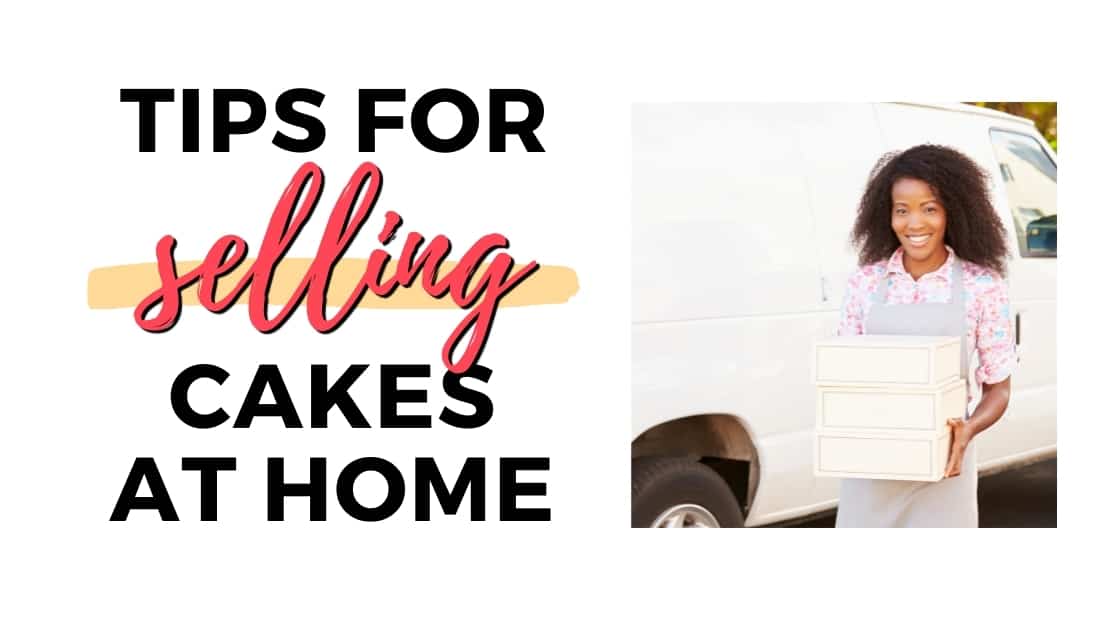
In this post, I want to share some tips I found helpful when I was selling cakes from home and some words of encouragement.
Now, this is not an exhausted list. There are many things to think about when starting a business, particularly a food business.
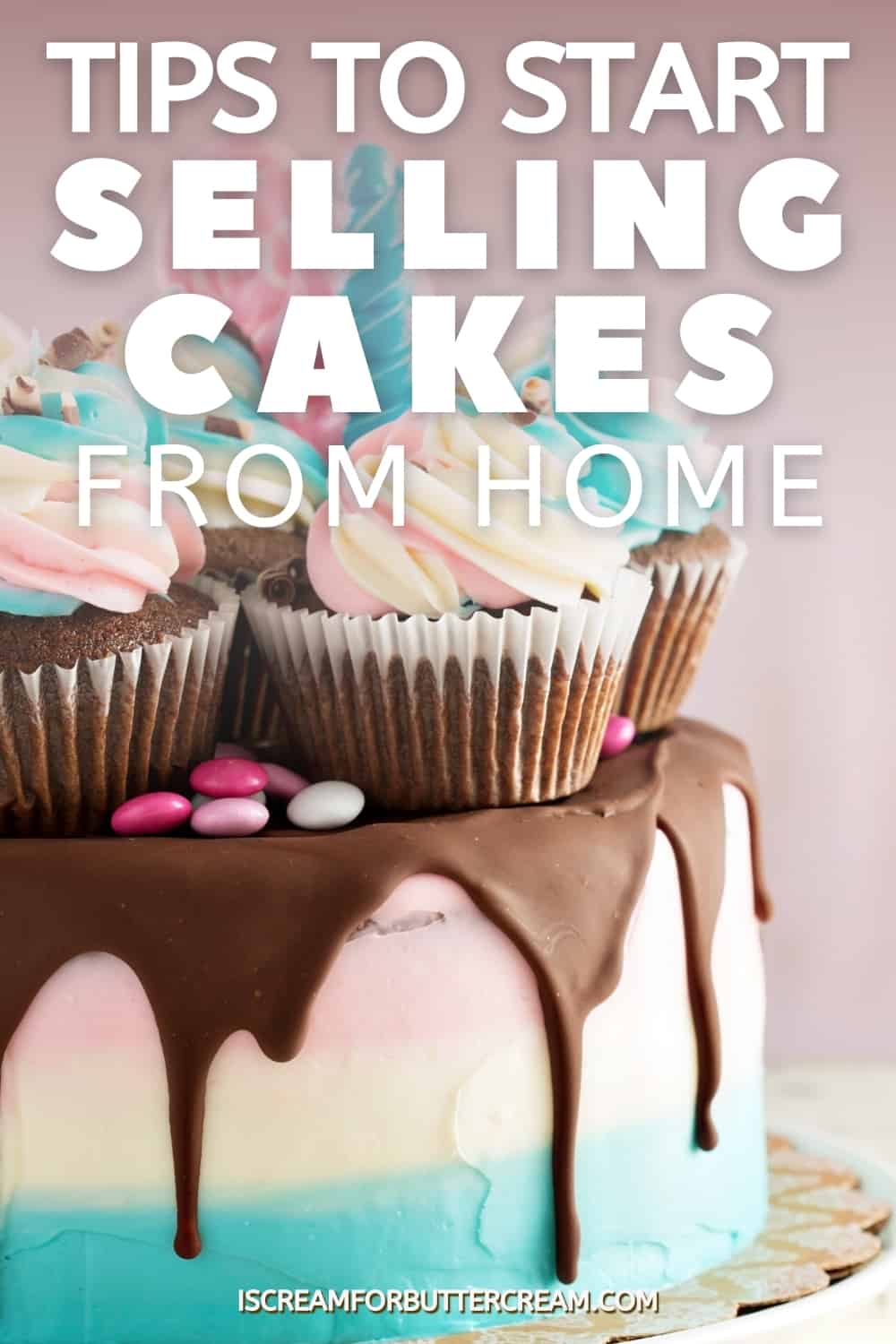
Jump to:
- Check the laws:
- Get insurance:
- Decide what you’ll offer:
- Perfect your basic recipes:
- Practice First:
- Determine your pricing structure:
- Track your finances from the beginning:
- Take good pictures:
- Organize and figure out cake timelines:
- Don’t forget about food safety:
- Figure out how you’ll accept payments:
- Set up your branded business items:
- Determine your policies:
- Printable Cheat Sheet:
- Other posts you might like:
First off I’ll say that I’m not a lawyer and not an accountant, so always get advice from a professional before making a final decision. I’m also not the premier expert on running a cake business, but I did manage to run mine for several years while working full time and I learned a lot.
Ok, here we go… (oh by the way, I also made a handy tip sheet you can print out for free that lists all my tips. You can find that close to the bottom of the post.)
As an Amazon Associate, I earn from qualifying purchases.
Check the laws:
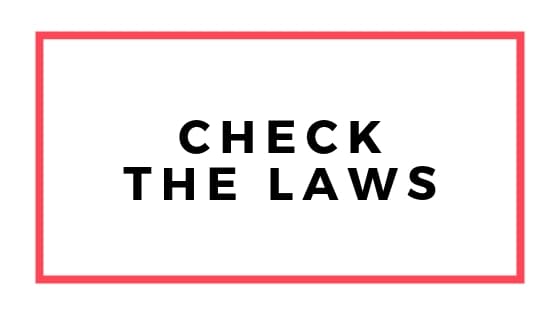
Before ever selling any type of food from you home, you definitely want to check out your laws. Just because you see people selling food from their homes on Facebook, doesn’t mean it’s legal.
Don’t trust that those other people have done their homework. You’re the one that has to pay for your mistakes, so look out for yourself and do your own research.
Google your state laws on selling food items from home:
- Does your state have a cottage food law? If so, what does it say?
- Do you need a separate kitchen?
- Can you sell anything, or just goods that aren’t perishable?
- What about label requirements?
Know your laws…get familiar with them. In Texas, we have a cottage food law. That means we can sell food out of our homes, but it cannot be food that must be refrigerated.
When I was selling cakes from my home, that really put a limit on the types of cakes and fillings that I could sell. Sometimes you’ll just have to get creative.
For example: If someone wanted cream cheese buttercream, I’d have to do American buttercream with a cream cheese flavoring added to it.
Laws aren’t something you want to ignore though. Lawsuits are the real deal and if you’re just a sole proprietor, then your personal money is at stake…not just the business’s money. Be very careful to follow the law.
I don’t know about other states, but if you’re in Texas, here’s a link to our cottage food law: Texas Cottage Food Law
I also can’t stress enough how important it is to obey the labeling rules as well. Your state or local government may have specific things you must put on labels (Texas does).
Now, obviously you can’t put a label on the actual cake itself, but you can attach a label to the cake box.
It may seem aggravating, but really the law is there to protect people. Personally, I have a tree nut allergy (which is why you don’t see many cakes with nuts on my blog) and frankly I am one of those people who really appreciate allergy labels on foods.
Get insurance:
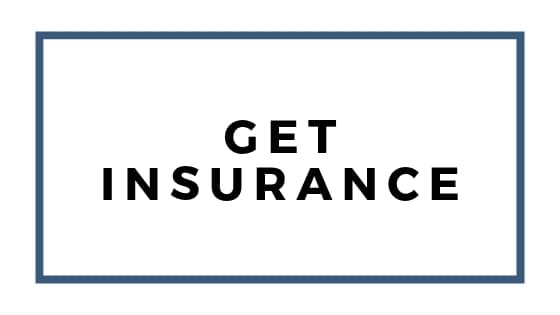
This is another ‘cover your butt’ move. I didn’t have insurance for the longest time and it really made me nervous. My day job is working as a law librarian (I’m not an attorney though), so I see first hand the crazy amount of lawsuits that go on.
Sometimes it could be a simple mistake on your part, or the client got buyer’s remorse and wants to retaliate. Who knows, but if you have some type of insurance, that may give you a little more peace of mind.
It’s a good idea to call your insurance agent where you get your house or car insurance and ask them first to see what they suggest.
I ended up getting FLIP, which is Food Liability Insurance Program. I paid by the year and it wasn’t too expensive.
Now, I never had to file a claim, so I can’t give a review on how they are at paying claims, so I suggest reading about them and trying to find some reviews.
Here is a link to their website: FLIP – Food Liability Insurance Program
Decide what you’ll offer:
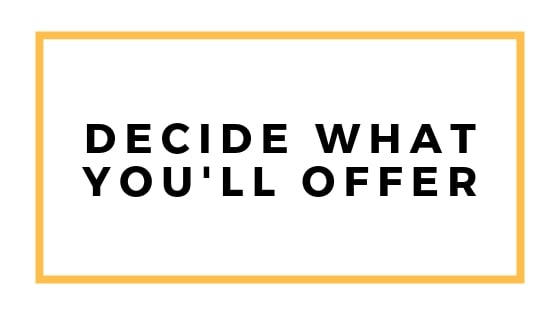
You’ll want to decide what kind of cakes you want to offer (or at least have a good idea). You can always adjust later on once you get some experience under your belt.
So figure out:
- Do you only want to do birthday cakes?
- Wedding cakes?
- Cupcakes or cake pops?
- Only buttercream cakes or will you offer fondant cakes?
- Will you include delivery or charge for it?
- Will you deliver at all?
- What about flowers on cakes?
You don’t have to have every single detail worked out, but have an idea going in of what you like to do and what you really don’t want to do.
You don’t have to take orders for cakes you don’t like making. If you hate working with fondant, then only offer buttercream cakes.
You can always widen your offerings later if you find you really want to branch out and once you’ve gotten more experience.
Perfect your basic recipes:
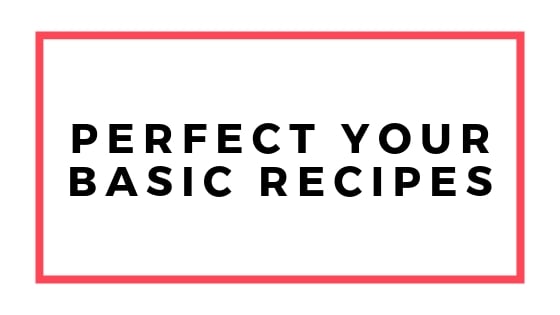
You want to get your basic cake recipes together and perfect them. You don’t have to figure out every single type of recipe that you’ll ever offer, but get your basic recipes down and make sure you’re happy with them.
You at least want a basic menu of flavors you’ll offer. Of course, you’ll get requests for unique flavors and you can take on the challenge if you want to at that point, but at least get the basics like vanilla, chocolate, marble, or whatever is popular in your area, perfected.
I’m kind of partial to the recipes here on my blog and here are some basics you may want to try out:
Practice First:

Ok, I know you know this, but I have to say it. Practice first before you ever start selling cakes.
Don’t start before you’re ready. Now that doesn’t mean you have to know everything, but you do need to be comfortable with the basics and have those down.
You also don’t want to wait forever either, because you’re never going to know everything. Even those famous cakers out there don’t know everything. I mean they know a ton, but they are still learning and experimenting.
Practice your basic cakes. You should have your basic cake decorating skills down like how to cover cakes in buttercream, stacking cakes etc.
Determine your pricing structure:
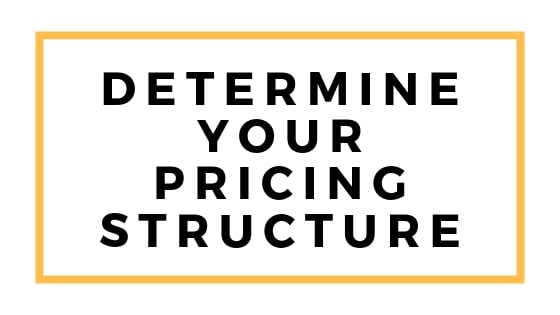
Have a good idea of how you’ll price your cakes. There are many different ways you can do this.
You don’t have to use just one specific kind of pricing method. For example, charging by the serving, won’t really work that well for a super intricate cake that takes way more work than a simple iced cake, but that has the same amount of servings.
So, don’t advertise that your cakes are $2.50 per slice (or whatever price) because then you’ll box yourself into a corner. You can always use a ‘per slice’ amount to help you quote a cake, but personally, I never said “my cakes are x amount per slice”. I just made a quote for the entire thing.
Most clients do think it’s the amount of servings that cause the price to go up and that can be true to a point, but mainly it’s the amount of work involved for that particular design.
You can also set up a pricing structure that states the prices of plain buttercream cakes for 6″, 8″ and 10″ cakes…then add on from there if you want.
If you try to be the cheap cake person, you will work yourself to death and feel unappreciated and resentful at the same time. You will lose your love of cake making.
The Cake Boss has a good article on how to charge if you want to check it out. Here’s the link to it: Cake Boss’s How Much Should I Charge for my Cakes
This is just one of those things that is going to take some practice. Don’t beat yourself up if you undercharge a few times. It’s going to happen. Just reassess and make a promise to yourself not to undervalue your work next time.
You will get better and faster at quoting prices, the longer you do it.
Track your finances from the beginning:
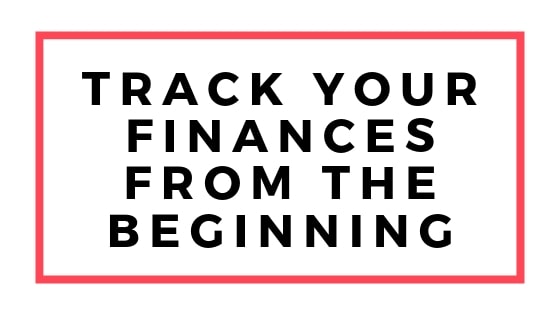
Start bookkeeping from the very beginning and don’t forget about taxes. If you’re not sure how taxes will affect you, do a google search for your country and state, or go to your local tax office and ask.
You don’t have to get fancy. You can just keep a simple spreadsheet at first in excel or google sheets, which is free to use. Later on, you can then move up to something fancier like QuickBooks or Freshbooks or something similar.
Make sure to track your income and expenses from the beginning. If you get a separate bank account, it’s much easier to keep track that way.
Take good pictures:

You don’t have to get fancy and spend a ton of money on a new camera. You can use your phone if you want.
You can get a couple vinyl backdrops if you want and take pictures next to a natural light source. Turn off your inside lights if they have the yellow bulbs. The yellow bulbs are what makes pictures look terrible. Try to take pics next to a window or get the ‘daylight’ bulbs.
There are also lots of photo editing apps you can use now that can really do some amazing things.
I do have a post that goes through some simple tips to take cake pics. You can find that here: Practical Tips for Photographing Cakes Plus Editing
I have since changed up some things since that post, but it’s still a good place to start.
Here’s just a bonus note about taking pictures: Try not to send any ‘in progress’ shots to the client. You may be excited and want to share with them how the cake is coming along, or how this topper you made is coming along, but most of the time that backfires on you.
The couple times I did it, it totally backfired. They’ll want to change things completely up even though you made the design they asked for and agreed to. You’ll be out more money and more time and/or frustrate the client, who doesn’t understand how long things take or how much is involved with changing a design.
It’s also hard for the client to see your vision, so sending ‘in progress’ pics can panic them because they are seeing the middle, but in your mind, you see the end result.
If they ask you for an in progress picture, just use your best judgement on it. I certainly wouldn’t be rude. Honestly though, most people do not ask for that.
You’ll also want to start a Facebook page and Instagram account and add your cake photos there. Tell everyone you know that you do cakes and tell them where they can find you and pics of your cakes.
Organize and figure out cake timelines:
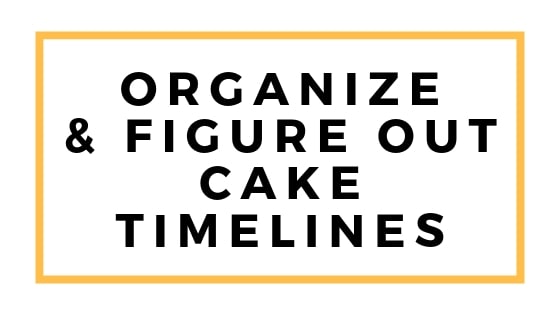
You’ll want to set up an organized system for how you’ll take orders, send contracts and keep track of all your cake projects.
Get yourself organized and decide on a basic cake timeline. Have a place where you keep all your cake projects, so you can plan ahead.
Plan out each project so you know what you’ll have to do and when to do it and what supplies you’ll need to get.
Get used to prepping and planning your projects. Being organized helps everything go smoothly.
If you’re a fly-by-the-seat-of-your-pants type of person, this may not be as important to you. Personally I am a planner and I do not work well under stress and pressure, so I like to keep everything organized and planned out as best I can.
If you’re looking for a planning system for planning out a large cake order, I have one for you. It’s called the Ultimate Cake Project Planner and it’s a guide with printables to help you plan out your cake projects.
There are two designs: The Floral Planner and the Modern Geometric Planner
Don’t forget about food safety:
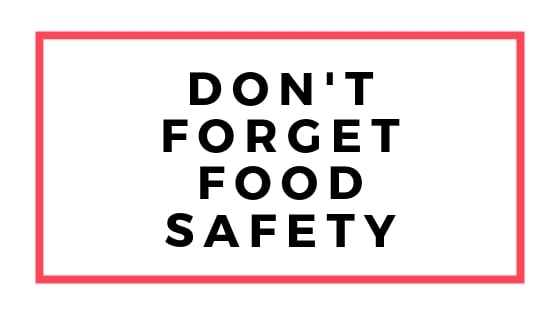
Know food handling safety. See if you can get a food handler’s permit. Most of the time you can get this online and it looks and sounds good to clients when you can say you have a food handler’s permit.
Your state or local government may not require a food handler’s permit, but if anyone asks, since you’re baking from home, it’ll be nice to say you have it.
You can even add your food handler’s permit number on your cake box labels. (By the way, make sure to check your local laws for proper labeling as we mentioned above.)
Figure out how you’ll accept payments:
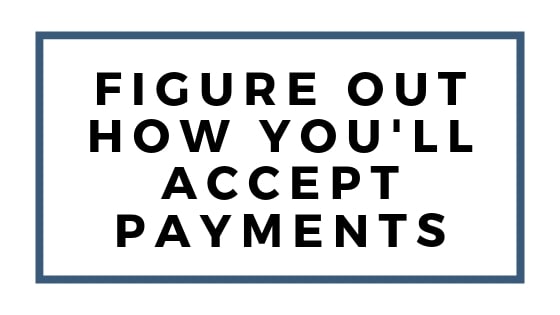
You want to set up how you’ll accept payments: Paypal, Square, Cash, Check, A payment app? Just figure out how you’ll accept payments.
Set up your branded business items:
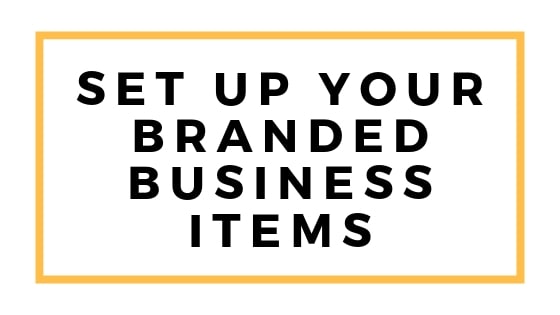
You’ll want to set up your other business branded items like business cards, boxes, labels, thank you cards, etc.
Things don’t have to be perfect as far as logos or other stationary goes. You can always change that and adjust it later. Don’t get caught up trying to get your logo and website (if you have that) perfect. You don’t want to take too long on this step.
It’s always going to be changing and evolving. Things don’t have to be perfect and you can always adjust things later on if you need to.
And by the way, you don’t actually need a website straight out of the gate either. You can start on Facebook or IG and see how it goes and then if you’d like to have a more professional space, set up an easy website.
There are plenty of tools that make it easy for setting up websites on your own. You’ll want to go to godaddy and purchase your domain first and then you can use a website/hosting service like Wix, Squarespace or Shopify to set it up easily.
Now, if you’ll be setting up a website that will include blogging about cakes, then I would go with WordPress plus a host, but for just an easy, simple set up, the choices above will work just fine.
Determine your policies:
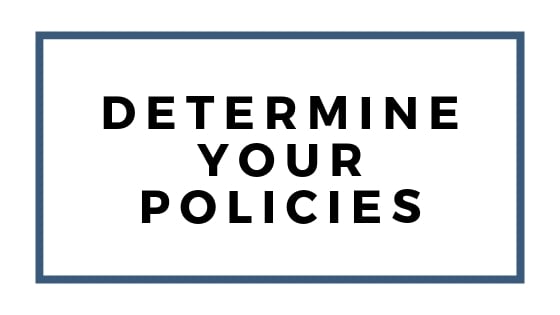
I feel like this is one of the most important things to do before you get started selling cakes.
Think about this: What will your business policies be? For example, figure out what you’ll do for discounts…Will you actually have them? If so, how much and for whom? Are you going to give all friends and family discounts? Know that ahead of time because you WILL be asked.
Ask yourself: Do you want to do cakes for people for free at first, just to get some practice in, or do you want to have them pay for the ingredients?
There really aren’t any wrong answers here. Just determine what you feel comfortable doing and what actually seems fair. If it doesn’t seem fair to provide free cake to a family member or friend and it’s taken you a ton of time, then put it in your policy that you will charge family and friends and what, if any discount you’ll give.
This is going to sound negative, but it was true with me and it’s true with lots of other home cakers I’ve known. The biggest cake baking issues I’ve had were with friends of friends, or people are knew somewhat, but weren’t close.
There are going to be people who think because you are a home baker and they somewhat know you, that you should be super cheap and give them a ‘deal’, however unfair that might be to you. Have your policies ready for that.
You’ll also want to determine your policies about contracts and deposits:
- How much deposit will you ask for…will it be refundable?
- How far in advance must the client pay?
- What about refunds?
Write up a basic contract and determine if you’ll want one signed for every order or just over a certain amount.
I’m going to share with you what I did when I was selling cakes and what worked for me:
- The client and I would agree on a design and I’d let the know the price. I’d ask for at least a 50% non refundable deposit. (Yes, on both small cakes and large cakes.)
If you don’t say ‘non-refundable deposit’ and it’s not in your contract, they could cancel at the last minute, want their deposit back and leave you with a decorated cake and no money for it.
- I also would not hold the date (put the cake project on my calendar) until I got the deposit and the contract was signed…I made sure to tell the client that as well plus I told them the date that the deposit and contract needed to be signed by, so it wouldn’t be done last minute.
- Don’t block off that day, or buy ingredients and supplies until the non-refundable deposit is paid. I didn’t want to hold a date for someone who wasn’t serious and who didn’t plan to go through with the order. If they are serious, they’ll put a deposit down.
- The other half would be paid before or at pick up. Preferably before and especially if it was a wedding cake. That all needs to be in the contract. They need to know the due date they have to pay you by for the rest of what’s owed.
- Have in the contract the last day they can make any changes to the design. Make that clear to them.
- Make sure it also states in that contract that once it’s left your hands, it is no longer your responsibility. If it falls over because they move it from one table to another, you aren’t responsible. If they go sticking items into the cake and it becomes unstable or inedible, it’s not your responsibility. Those are all things that are good to put in a contract and go through with the client.
- Make sure you both sign the contract. You can do this on paper, or through a contract signing app.
I do have a sample contract that I used and it’s available for you to download below.
Please note though that I am not an attorney, so none of this is legal advice. You’ll need to consult an attorney for more advice on what needs to be in a contract.
You can download the contract at the link below to use at your own discretion. I am not to be held responsible if this contract does not fit your needs.
(If you do not have the Word program, you can upload this file to your Google Drive and edit it there.)
Ok, once you’ve got all your basic business policies decided, you don’t actually give clients your policy…it’s just something for you to go by.
Of course, you’ll give them a copy of the contract, but not really your business policies…those are just the rules that you follow in your business.
A quick note on policies: I find having business policies makes it easier to say ‘no’ to people when you need to. You can just blame it on the policy. Just say “I’m so sorry, but my policy is not to…. or my policy is to…” or something like that.
Cake serving charts for clients:
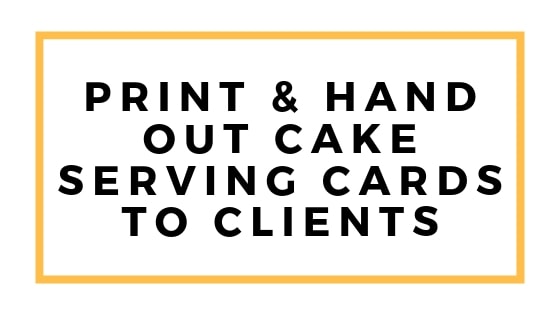
Ok, you don’t have to do this, but I always thought it added a nice touch.
When you hand over each order, you can add in cake serving cards and also cards that tell the customer about any non-edibles that are in the cake like dowels etc.
You can find serving charts online and print them out on some nice cardstock paper. Cut them down to size for your clients to use. It’s a guide that will help them cut the cake. This is especially helpful to them if it’s a wedding cake.
If there are items that are not edible, like dowels etc., then print out a card that lists those items and make it easy for them to know what to remove. They’ll think it’s helpful and it’s actually protecting your business at the same time. Clients will love this personal touch.
I’ve actually designed some ‘non-edibles in this cake’ cards you can print off and use for yourself. (There are 6 different designs.) You can download these and either type in them by editing the pdf, or just print and hand write the items in.
Just click on the graphic or the link under it and it will download automatically.
Prepare mentally:
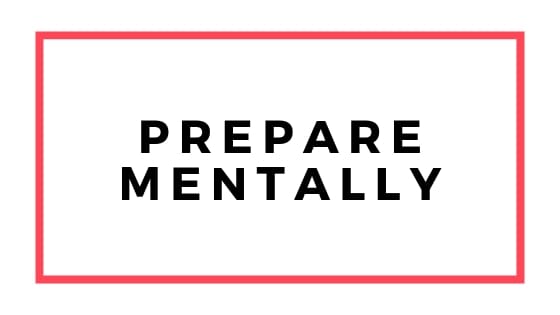
You’re never going to be completely prepared, but you at least need to be okay with setting boundaries.
You’ve got to have some boundaries in place and that means if you don’t want to take cake client calls after 5pm on weekdays or on weekends, then stick with that. Fall back on your policy like we talked about above.
Ok, I’m about to get real now…Some of us have a really hard time setting boundaries, especially us women. We are brought up to be the opposite. It’s just our societal pressure, but we can learn otherwise.
If you struggle with setting boundaries and actually keeping them and you let people walk all over you sometimes (no shame in the game, I’ve been that way too), there is a very good book that you might want to check out.
You can find it here: Boundaries by Henry Cloud and John Townsend
Be prepared to grow a thick skin because you’ll have to deal with complaints, changes at the last minute, cancelled orders after you’ve made them etc.
These are all lessons I’ve learned and frankly it’s not in my nature to deal with stress or conflict well, so that wasn’t something I was willing to deal with. For you it may be different.
Your boundaries WILL be pushed. Be kind, but be firm in your boundaries. Just know that mean people, or people who try to take advantage of you, are NOT the majority of people.
At the same time, you want to be somewhat flexible too. If a client has an emergency like a death in the family or something major like that, you may want to reassess and adjust your policy for that particular incident.
Do what is comfortable for you, but don’t let someone walk all over you or bully you either.
Continue to learn and try new things:
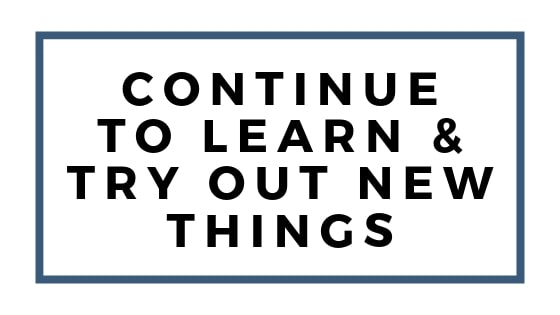
Continue to learn and try out new things and ways to do things. You can take courses on Craftsy (now Bluprint), watch YouTube videos, read cake magazines, read cake forums and join cake Facebook groups. Many times other cakers love to share what they know.
Try out new methods of doing things. You never know…it may work better than the method you’re currently using. Keep an open mind.
Get support:
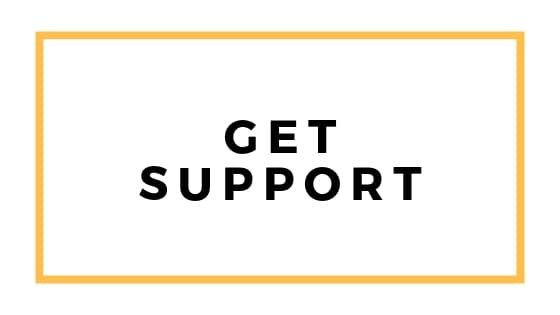
Join Facebook groups about baking and decorating cakes. You can learn a lot from just reading other people’s posts and you can ask questions when you’re stuck.
Be sure you’re in a supportive group though. Some are not that supportive and can have a little bit of a tense feel to them. It’s okay to remove yourself from a group if you don’t feel comfortable. Nobody has time for drama.
You can also join online forums like CakeCentral. There are a lot of people there who are very helpful.
And even if you don’t want to ask a question, you can search for your question on their forum. Many times you’ll find the answer because likely someone else has already answered it.
Listen to your gut and stick to your values:
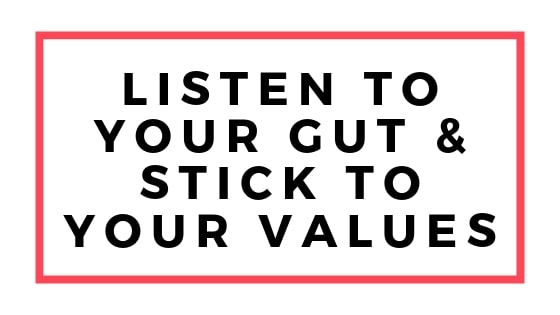
If something feels off with a client or an order, honor your intuition. If you do not feel experienced enough to make a particular type of cake, you can say no.
This is your business and it is okay to turn down an order if you need to.
For example, if someone is demanding that you make a cake that will be outside and you know it’s just going to be way too hot, then you can just say no. Do NOT take on that kind of liability. If your gut is telling you something, then listen to it.
If a customer wants a specific cake they found online, make sure to tell them that the final look can vary slightly due to the fact that it’s being made by a different person.
Try to manage expectations as well as you can. You can’t really control what a customer will think about the final product, but you can let them know that there will be slight variations from the picture they gave you.
You’re the expert. Most of the time, the client isn’t being rude, it’s just that they don’t know. If they show you a picture of a fondant cake and say they want it in buttercream, well there are just some things that cannot be done with buttercream.
Explain that to them…they just don’t realize it. If they are adamant that they still want to move forward with it, then use your best judgement. If you feel uncomfortable, then say you’re sorry, but you won’t be able to do that cake in buttercream for them.
It’s either deal with a little discomfort now by telling them no, or deal with a lot of discomfort later by stressing out while making it because you know what’s going to happen…then you’ll have to deal with an unhappy client in the end anyway.
When I was selling cakes, I had a rule that if I made fondant cakes, I would use only ganache under the fondant. I used buttercream as the filling, but the outside was covered in ganache instead of buttercream, then the fondant went over the ganache.
I just got a smoother finish on my fondant if I used ganache and it was much more stable for me. I explained that to each client and gave them a choice of white chocolate or semi-sweet. No one had an issue with it and once I explained why, they all understood. Just be upfront with things like that.
I heard on a podcast one time that humans are the only animals who second guess their own intuition. A bunny hopping along a path that sees a wolf doesn’t say, “Yikes that’s a wolf and it’s going to eat me, oh wait maybe I’m just being negative and it’s just a friendly wolf.” Nope it hops on out of there. It KNOWS something isn’t right.
So listen to your intuition. You’re not always going to know 100% why you feel a little off, but you feel that way for a reason. Also don’t let a client or another vendor bully you into anything. Stick to your values.
Thank your clients:

Last, but certainly not least, thank your clients!
Give them a thank you note when you deliver or they pick up the cake, or send it to them later in the mail. You can even add in a discount card for their next order and add in some business cards as well.
If you truly care about them, they will feel that. Just make them feel appreciated.
So I hope if you’re just deciding to sell cakes, or if you just started selling cakes, that this was helpful to you.
There are a lot of things to think about here, but the main thing is to just prepare as much as you can, but realize you won’t have everything perfectly set up to start and that’s okay!
Don’t feel like you can’t adjust things later on…you certainly can and you should!
Printable Cheat Sheet:
If you’d like to download a printable cheat sheet with the highlights we talked about in this post, you can do that below.
Other posts you might like:
- Questions to ask before taking a cake order
- How to store a cake
- Common cake decorating problems and how to avoid them
Don’t forget to pin it below!
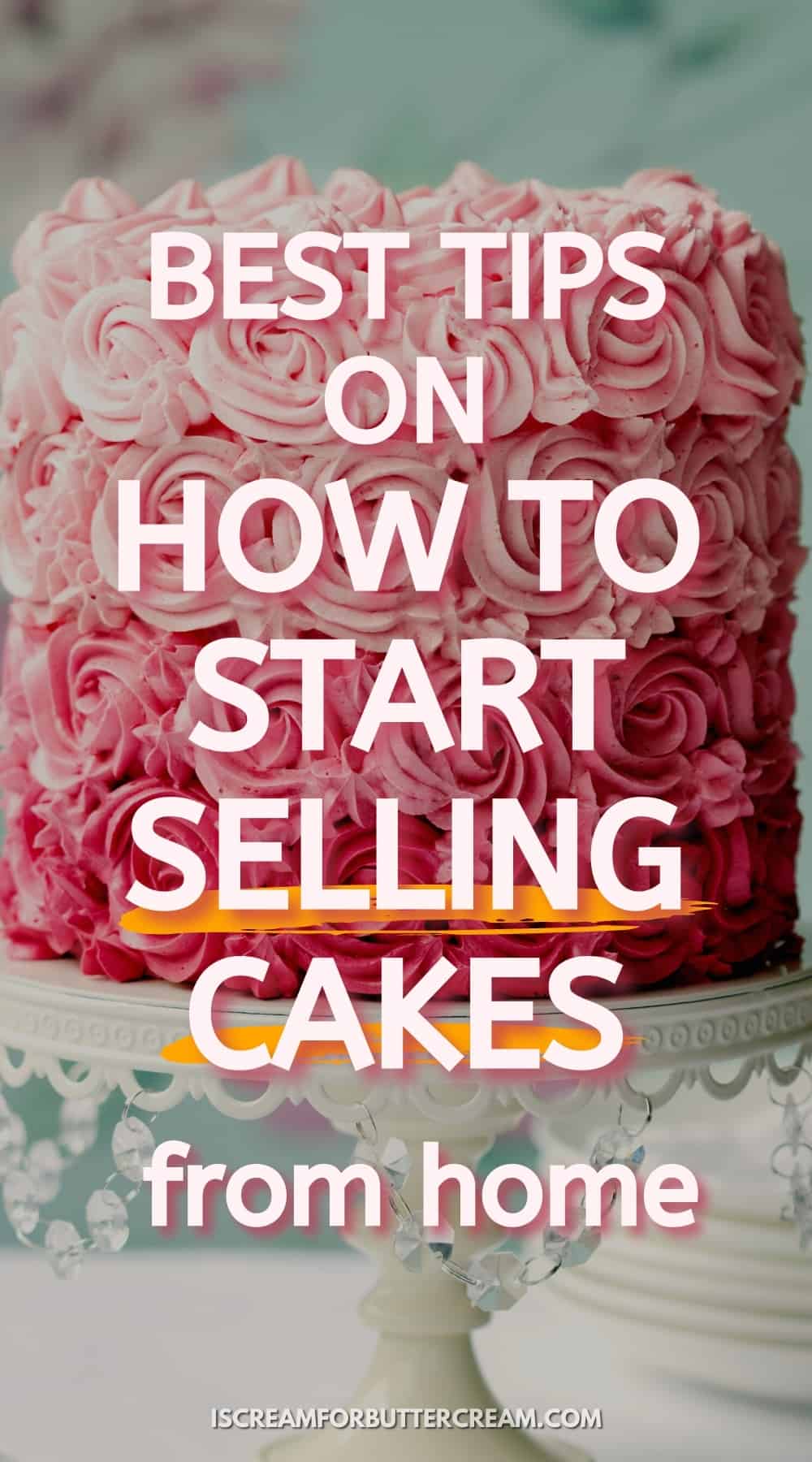
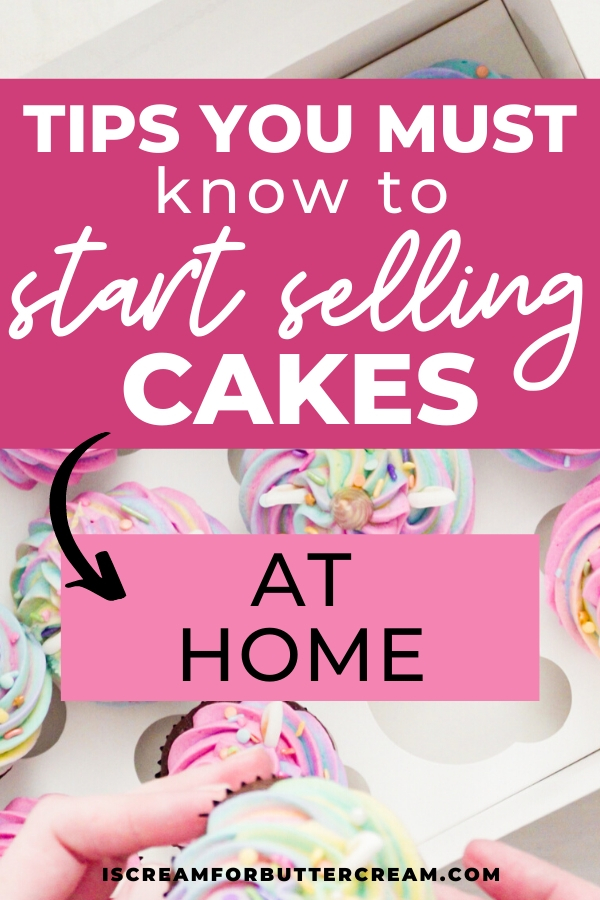

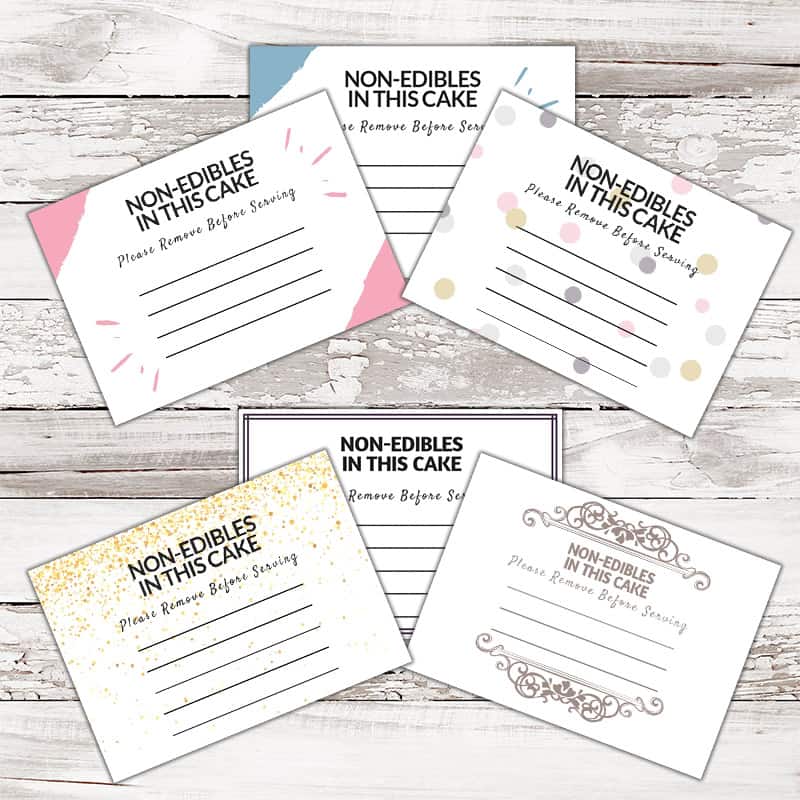
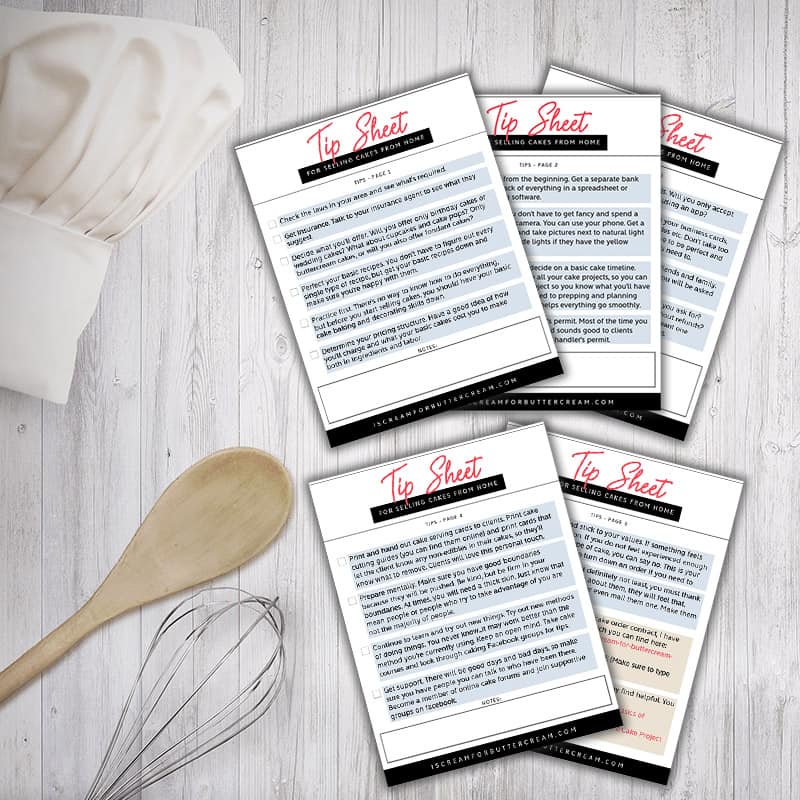
Lexi
Brilliant article! You covered everything so well.
Kara Jane
Thanks Lexi!
Onie Panjaitan
I love everything about this post!! Very detailed and very positive. Great writing, great information, covers all sides of having a bakery. Thank you so much for sharing!
Kara Jane
Thanks so much! So glad it was helpful 🙂
Toni
Thank you so much for all your great info. I am actually in Texas so you mentioned some very important facts for me to look into. Love your personality and humor! May sound weird but you remind me a bit of my husband, because you have the same dry humor lol. Moved here in 1981, fell in love with Texan men and eventually found my Prince Charming (still is). This info is definitely going to help me. I love to cook and bake. Just never got into cake decorating until I bought a turntable ?. I found out I’m pretty talented. Made a “Hippie” cake for my 60th (yes, my own cake) and a cake for my adult daughter who turns 30 this month(she doesn’t live in Texas). People went nuts over them and asked where I bought them! I’m going to give this cake thing a whirl and see how it goes. Our house flooded in 2017 and we got displaced. Working for doctors, they’re not always understanding. So I have just been dog sitting for a bit, but need to venture into something more creative. Since I found baking and basic cake decorating fun and pretty easy, I’m motivated! Thank you again. I feel blessed I came across your page.
Kara Jane
Hey Toni! So glad you commented. Yes, I really do have a dry sense of humor…sometimes it doesn’t come across in a good light, so I’m glad you thought it did. 😉 And cake decorating is definitely addicting, right? It’s so much fun and then you can eat the experiments. And we all need a creative outlet…It definitely helps us get though life. Keep me posted on your cake decorating journey and experiments! I hope you have lot’s of fun. 🙂
Latashsie
Great tips I really apprectiate them. I have been baking for years and now I’m looking into starting a home baking business.
Kara Jane
Oh thanks! I’m glad it was helpful. Best of luck to you and your new business!
Rey
Kara, thanks for putting this together! You covered a ton of great information. Super helpful how you broke it down and I personally loved how you mentioned thanking your clients. I think that’s one of the things a lot of people forget about, especially at the start when there’s SO much going on. Speaking of thanking your clients, I’m with FLIP Insurance and I wanted to thank YOU for mentioning us, we really appreciate it! If any of your readers have questions about what coverage might be best for them, or want to see reviews from clients we’ve covered claims for, we’re always around to help if you shoot us a message through our Facebook page (https://facebook.com/fliprogram) Thanks again and good luck to you and all of the bakers reading this great post! 🙂
Kara Jane
Hi Rey, thanks so much for that comment. I hope readers will take the opportunity to check out the flip program and see if it’s right for them! 🙂
Andrea
Hi, thank you for this. I love that you added the part about boundaries and following our intuition, those were tips I wasn’t expecting but are certainly important. I keep feeling this urge to start selling my cakes so this was very helpful! Thank you again!
Kara Jane
Hi Andrea, thanks for your comment and I’m so glad this was helpful. Having a cake business is definitely a learning experience, but it can also be so much fun! Glad the boundaries part was useful…I just see a lot of hard-working cakers getting taken advantage of and then when they finally apply boundaries, they feel selfish. It’s not selfish. 😉 Stay true to yourself!
Amy Torres
What a great article! Well written, honest, informative and funny! Thank you so much for this! It was just what I needed to read right now!!
Kara
Yay! I’m so glad you liked it. 🙂